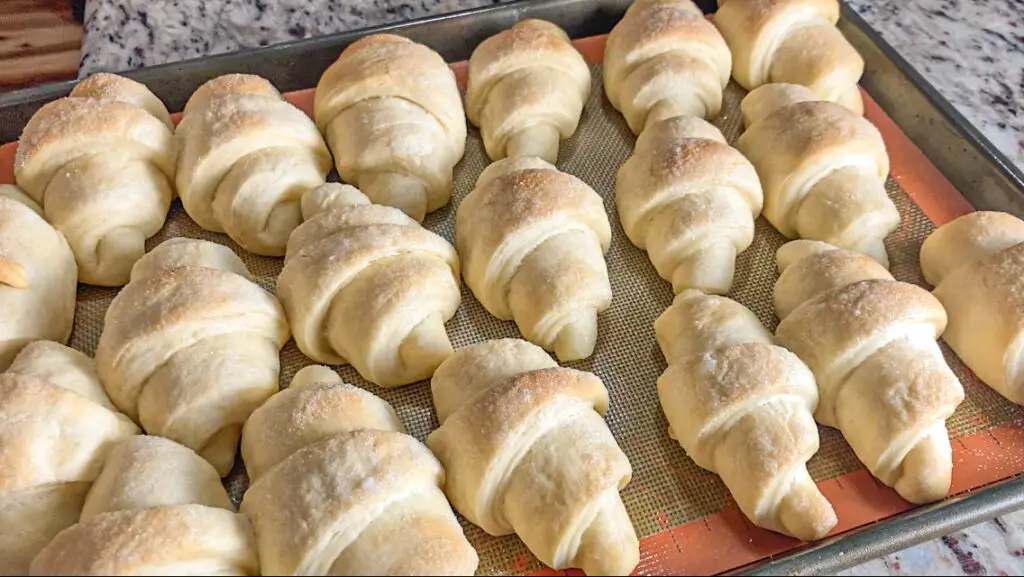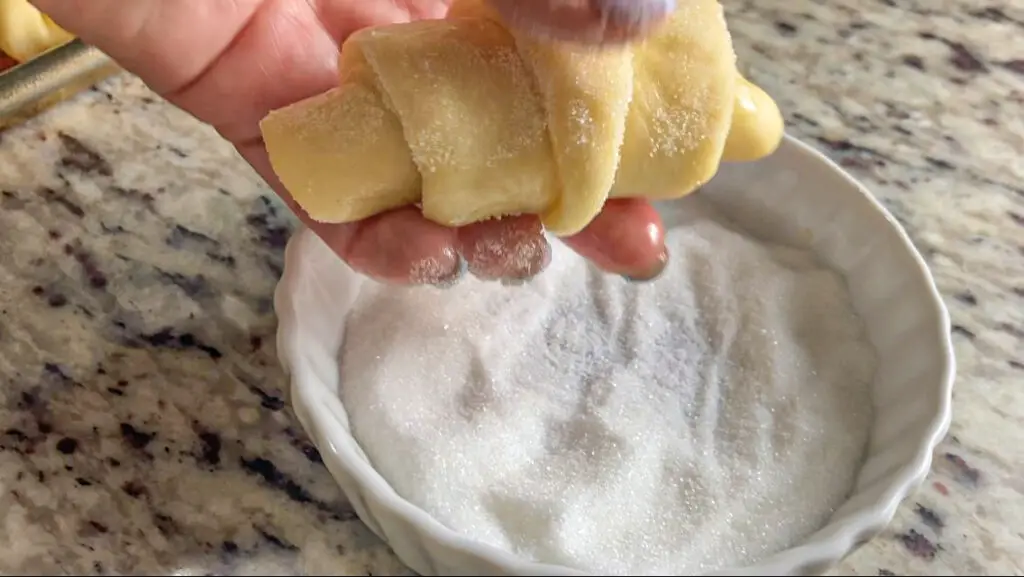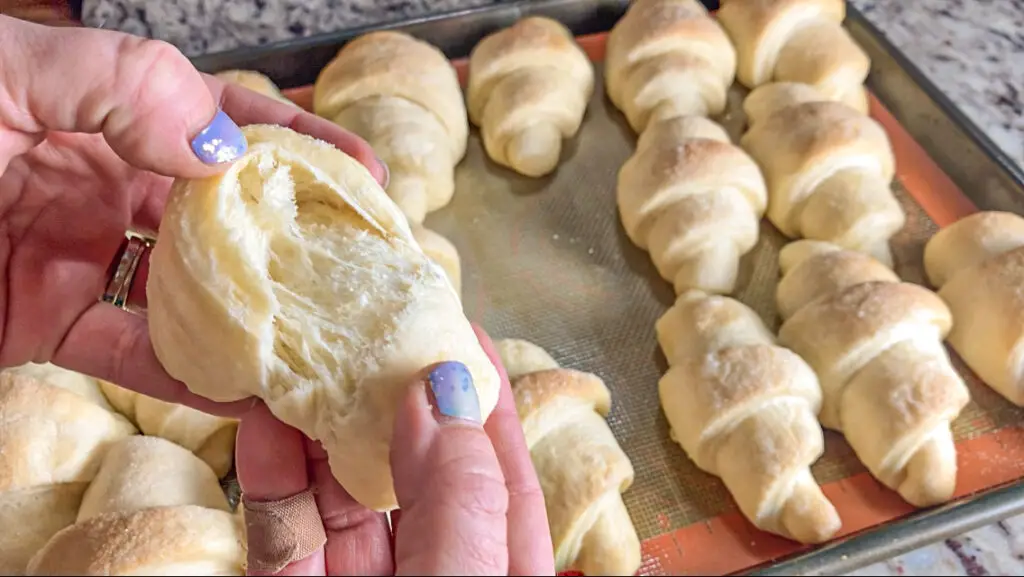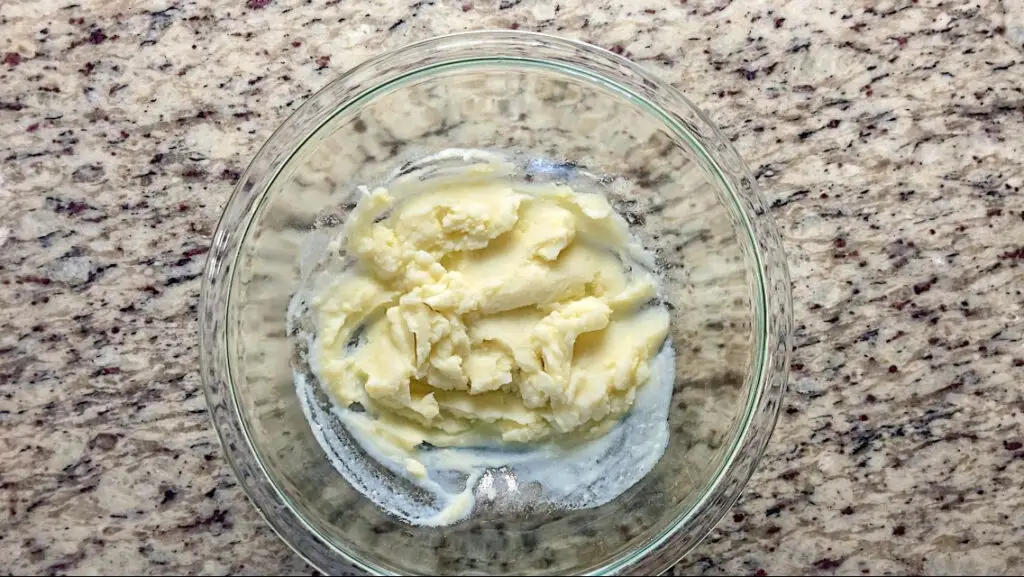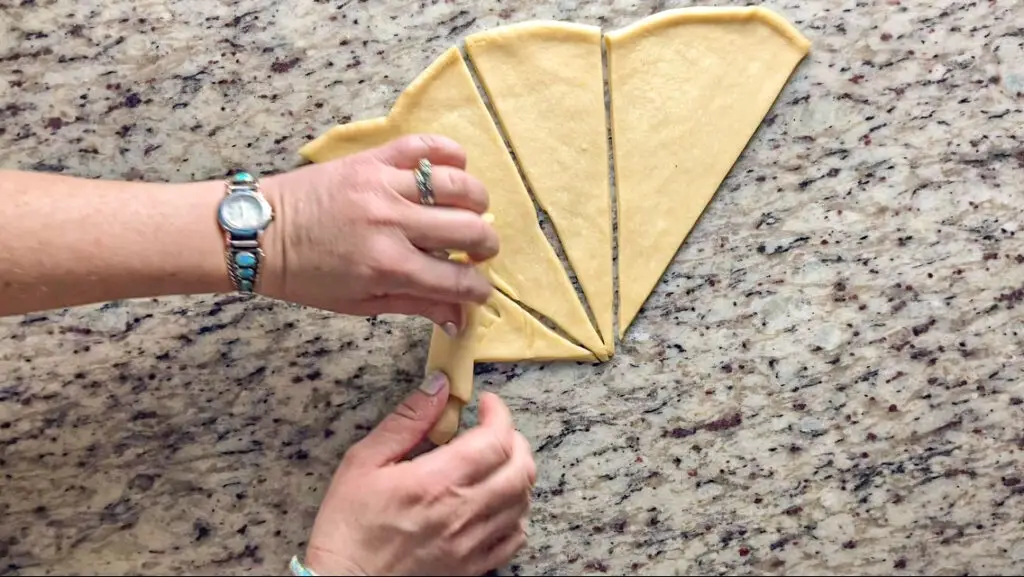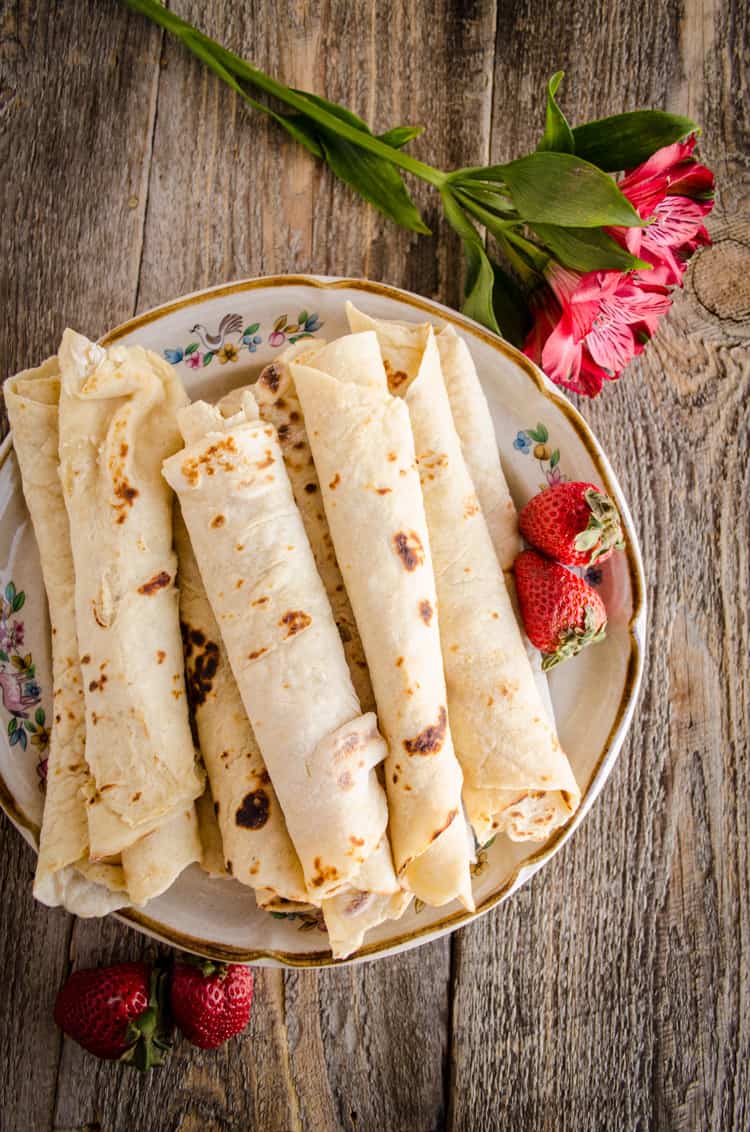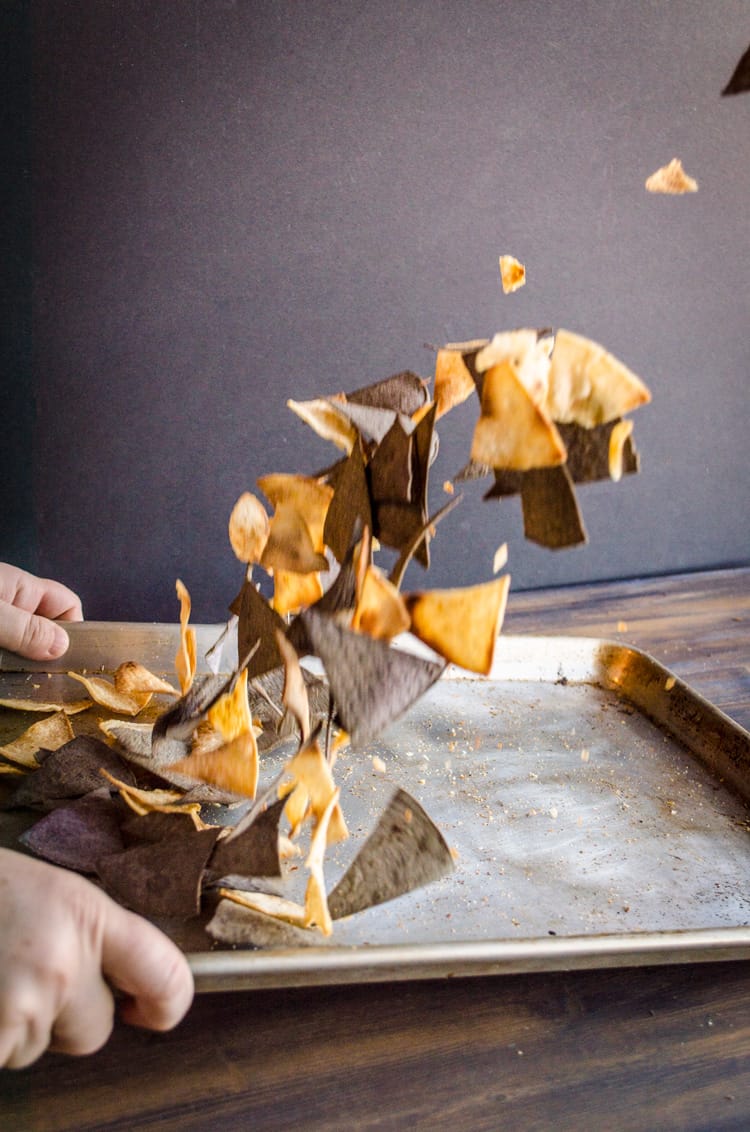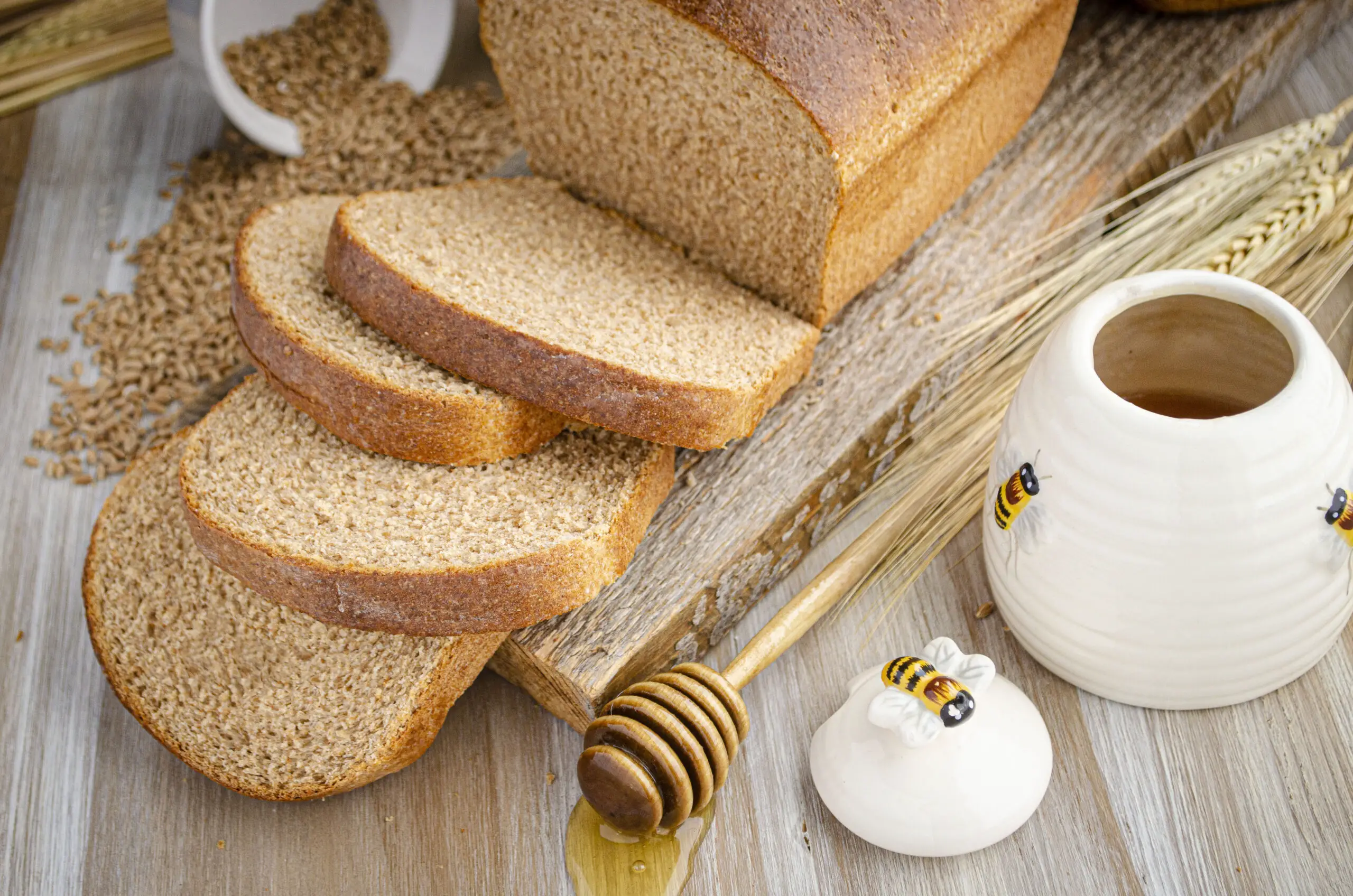Is potato bread good for you?
Personally, I feel there are few things in life (well at least my life anyway) more delightful than eating a warm potato roll with melty salted butter stuffed inside or a crunchy-soft potato bread grilled cheese sandwich with hot tomato soup. Comfort food at its finest.
I found some great information about potato bread when researching this article and I’d love to share it with you!
Is potato bread good for you?
The rich taste and soft texture of potato bread is frankly awesome. You may be surprised to learn, however, there are more benefits than just flavor when you add some mashed potato to your bread dough. So is potato bread good for you?
It depends: adding potatoes to bread dough increases the potassium, fiber, folate, and vitamin E, along with smaller amounts of zinc, iron, calcium, and magnesium compared to regular white bread. However, potato bread is often made with a lot of butter, sugar, and milk.
So if you’re on a limited-calorie diet, or trying to avoid carbs, eating this bread will likely not fit in with your diet. However, if you’re looking to simply increase your vitamin, mineral, and fiber consumption, potato bread is an excellent way to sneak in more of these healthy micronutrients.
Why does potato improve the flavor, moisture, and texture of dough?
Scientific studies have shown that adding potato to bread dough also gives extra moisture, a softer texture, and faster dough fermentation, creating more deeply flavored bread.
Dr. Al Bushway, professor of food science at the University of Maine, explains:
Potatoes contain more starch than wheat since starch traps moisture during baking, this creates a moister dough. Potatoes also contain less protein than flour. This results in less gluten being formed in the dough, which in turn produces a softer, more tender product. Finally, potatoes add another dimension of flavor in two ways; the free sugars in the potatoes cuase faster fermentation, resulting in a more complex flavor in a shorter amount of time, and the sugars that are not consumed by the yeast in the fermentation process add sweetness to the final dough.
Baking Illustrated 2004, p. 164
I have used mashed potatoes in all of my sandwich bread recipes for years because I just liked the flavor; it’s amazing that just adding a little mashed potato to my homemade bread has so many other benefits as well!
Using instant potatoes in your bread
Using dehydrated potato pearls or potato flakes is an excellent way to save a whole lot of time when making potato bread. If you happen to have leftover mashed potatoes, you can definitely swap them out for instant potatoes. Surprisingly, I notice my potato bread tastes just the tiniest bit better when using instant potatoes!
The recipe below has been cherished by my family for several generations. My father and his brothers and sisters have spent their entire lives eating these delightful potato rolls sprinkled with sugar for every special occasion. The recipe probably came from their time in either Minnesota or Ohio.
We’re not really sure where the recipe below originated, but I have seen several other similar recipes online labeled as ‘Amish’. Well, wherever it came from, kudos to the person who first added some mashed potato to their bread dough. Generations after you are sincerely thankful for your discovery :0)
If you like these rolls, you have to try my recipe for The Best Potato Bread right here!
I hope you find joy in making this recipe and please give me a shoutout if you post a pic of the recipe on social! Follow me on Instagram @TheGoldilocksKitchen, Facebook page The Goldilocks Kitchen, or Pinterest @GoldilocksKitch. Don’t forget to rate the recipe and leave a comment- I want to hear your feedback! (This is a blog after all and that’s the whole point right?!)
Important info regarding RapidRise yeast
RapidRise yeast is specially formulated to activate with water that is between 120 to 130 degrees Fahrenheit; temperatures that will kill regular active dry yeast.
To avoid problems, I always recommend that you use a good food thermometer to accurately measure the temperature of your food. I love my Thermopop from ThermoWorks, it’s a highly accurate, high-quality product at a fantastically affordable price. To me, owning a food thermometer is as essential as owning a frying pan. You can’t be a great cook/baker without one!
Print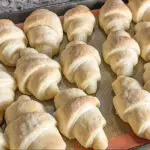
Potato Rolls recipe with Instant Potatoes
- Total Time: 1 hour 40 minutes
- Yield: 36 rolls 1x
Description
My Grandma Larsen’s famous potato rolls are a treat my extended family has enjoyed for 70+ years. This very rich soft dough is made with mashed potatoes, lots of butter, eggs, milk, sugar and flour. Just before baking, rolls are brushed in melted butter and dipped in sugar.
Equipment needed:
- Stand Mixer
- Rolling pin
- Food thermometer
- Pizza cutter
Ingredients
- 6 & 1/2 cups bread flour; more for dusting the work surface (all-purpose flour works fine too)
- 1 & 1/2 tsp salt
- 1 & 1/2 Tbsp RapidRise/quick rise active dry yeast
- 1 and 1/2 cups prepared instant mashed potatoes (or real ones)
- 3/4 cup softened butter, plus 1/4 cup for glazing rolls
- 3/4 cup granulated sugar, plus 1/4 cup for dipping rolls
- 3/4 cup milk
- 3 room temperature eggs, lightly beaten
Instructions
1. Set your oven to the ‘warm setting’ (if you have it), move an oven rack to the center position, and line two rimmed baking sheets with parchment paper or silicone baking mats. Whisk 4 cups of the flour with the salt and yeast in a mixing bowl. Set aside the remaining flour.
2. In a microwave-safe bowl, stir together the mashed potatoes, 3/4 cups butter, 3/4 cups sugar, and milk. Microwave the mixture until the butter is melted and the mixture reaches 125-130 degrees F.
3. Pour the heated potato-milk mixture into the bowl of a stand mixer. With the paddle attachment on medium-low speed, add the flour-yeast mixture and the eggs and mix until fully incorporated. Scrape down the paddle and switch it for the dough hook.
4. With the stand mixer running on medium-low, knead in the remaining flour about 1/4 cup at a time. Stop and scrape down the dough hook, then continue to knead for about seven to nine minutes total, or until the dough is not sticking to the sides of the bowl and is smooth and soft. It should spring back when gently pressed.
5. Remove the mixing bowl from the mixer and pull the dough hook out. Cover the bowl with plastic wrap and leave it for 10 minutes on the counter. Turn the ‘warm’ setting on your oven off.
6. Place dough on a clean flourless work surface. Divide the dough into three equal pieces with a sharp knife or a bench scraper. Set two pieces aside and cover lightly with plastic wrap. With a rolling pin, roll one section of dough into a large circle approximately 12 inches across and 1/4 to 1/8 inch thick. If the dough is very springy (shrinks back when you roll it) you can cover it with plastic wrap and let it sit for about 10 minutes before trying again.
7. Using a pizza cutter, slice the dough circle into 12 wedge-shaped pieces. Roll each piece from the bottom to the tip and set it on the prepared baking sheets about 1 inch apart. Repeat with the remaining two pieces of dough. Cover the rolls loosely with plastic wrap and put them in a warm oven to rise.
8. When rolls are approximately 1/4 larger (they will look ‘puffy’) take them out of the warm oven and set your oven to heat to 350 degrees F. Melt 1/4 cup butter in a small bowl, and place 1/4 sugar into a small flat container.
9. While the oven heats, remove the plastic wrap from one baking sheet. Brush rolls with melted butter. Then gently pick up each one and dip the top into the sugar and place it back on the baking sheet. Repeat with the other baking sheet. Bake rolls one baking sheet at a time for approximately 9-11 minutes, or until lightly golden brown on top. Remove and set on a wire rack to cool.
Notes
These rolls can be kept in the freezer for approximately one month. They are best eaten fresh.
Nutrition info calculated by verywellfit.com
- Prep Time: 1 hour 30 minutes
- Cook Time: 10 minutes
- Category: bread
- Method: Bake
- Cuisine: American
Nutrition
- Serving Size: 1 roll
- Calories: 155
- Sugar: 4.6
- Sodium: 135
- Fat: 5.4
- Saturated Fat: 3
- Carbohydrates: 23.2
- Fiber: 0.7
- Protein: 3.2
- Cholesterol: 28

